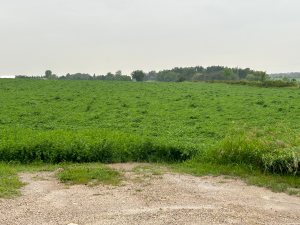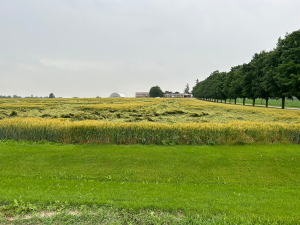Wellington County has seen some wet weather, but it's been separated by lengthy periods of scorching temperatures. Wilting, drying, and germination all come with the territory of a heat wave in farming, according to Janet Harrop, president of the Wellington Federation of Agriculture.'
Temperatures across Ontario have been in the 30's in recent days. With humidity, in Wellington County it felt like up to 40 degrees Celsius at points this week.
Luckily, Harrop says plants can counteract the high temperatures, due to the fact that they have roots that can stretch five to six feet into the ground. She adds crops can struggle when rain is extremely heavy, with gusts of wind presenting problems.
"When we see these extremes and the rain coming down so quickly, that will knock crops over. When we have huge downpours with some wind, then the risk comes of plants being knocked over and flattened in the field," Harrop said.
"These extremes are not ideal. If it's the only way we can get the moisture, I guess it's the lesser of two evils," Harrop added.
She likes when drier periods occur earlier in the year, she says, adding that plant technology has come a long way in recent years to aid in reducing damage from storms.
"The plant genetics changed to be able to help improve stock strength on crops. The root base is stronger," Harrop explained.
"Plants that can tolerate drought at different times, when moisture comes, they're able to pick up that moisture and grow," she said.
Harrop says the amount of rain a crop needs is specific to each plant, and there have been a lot of fast, rapidly growing plants due to heavy rainfall.

Before rainfall of 1.4 inches at Harrop's farm Thursday, plants were barren. Photo by Janet Harrop.

After rainfall, Harrop's crops were far more full and lively. Photo by Janet Harrop.
Certain animals digest their food differently and have a higher core body temperature. have a higher core body temperature, Harrop explains. She says fans and sprinklers are used as tools on farms to reduce the impact the heat has on these animals.
Listen to the story below:


